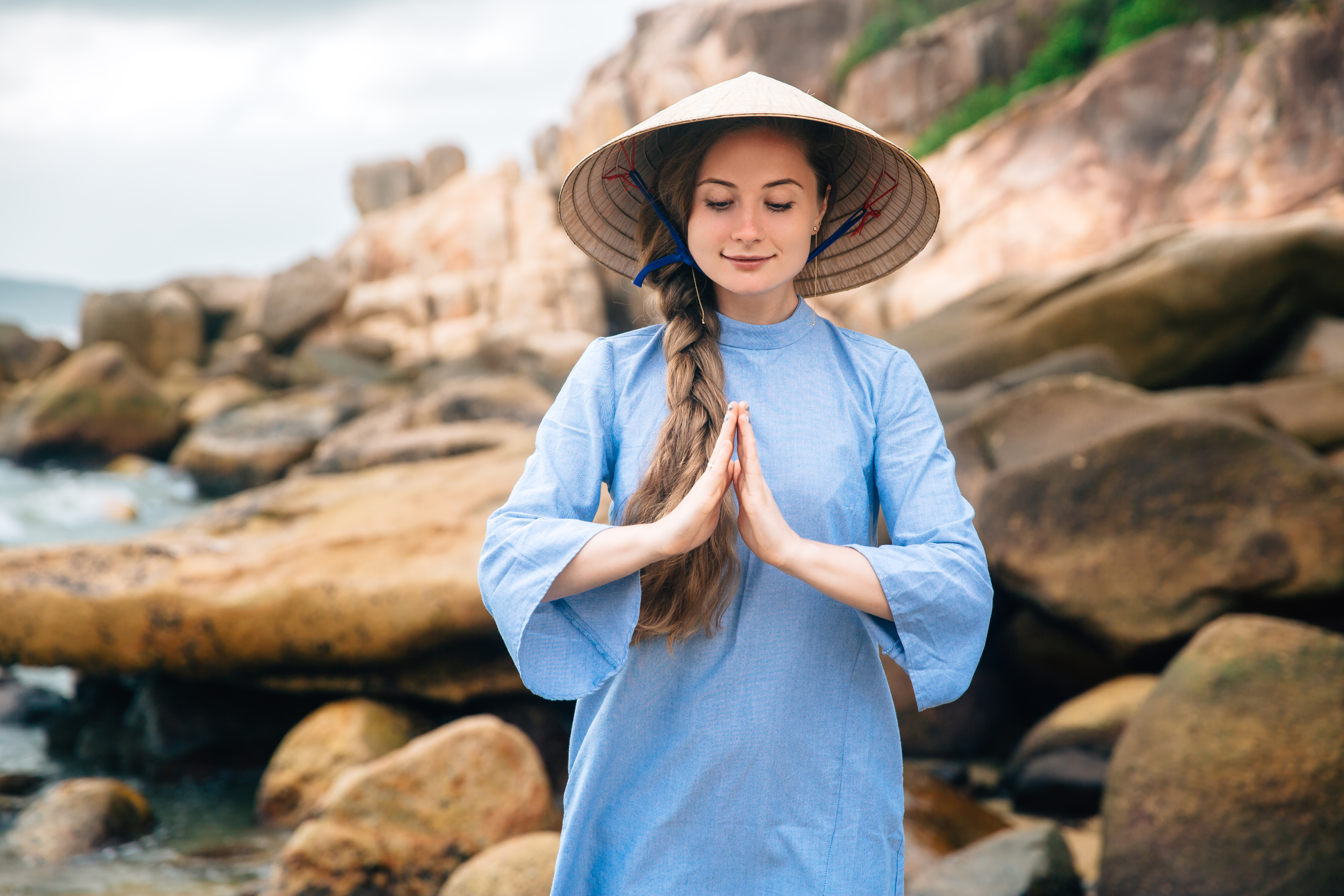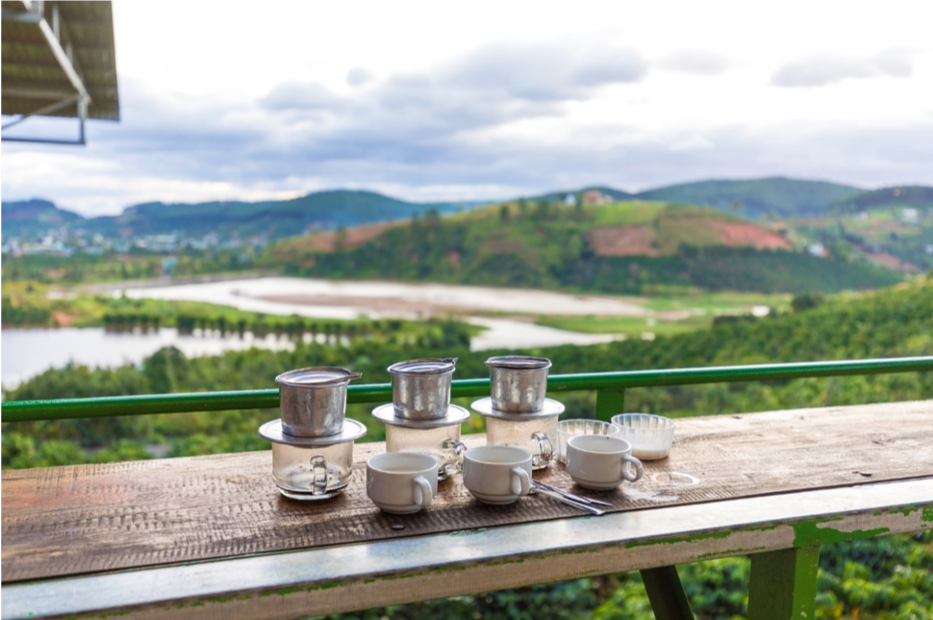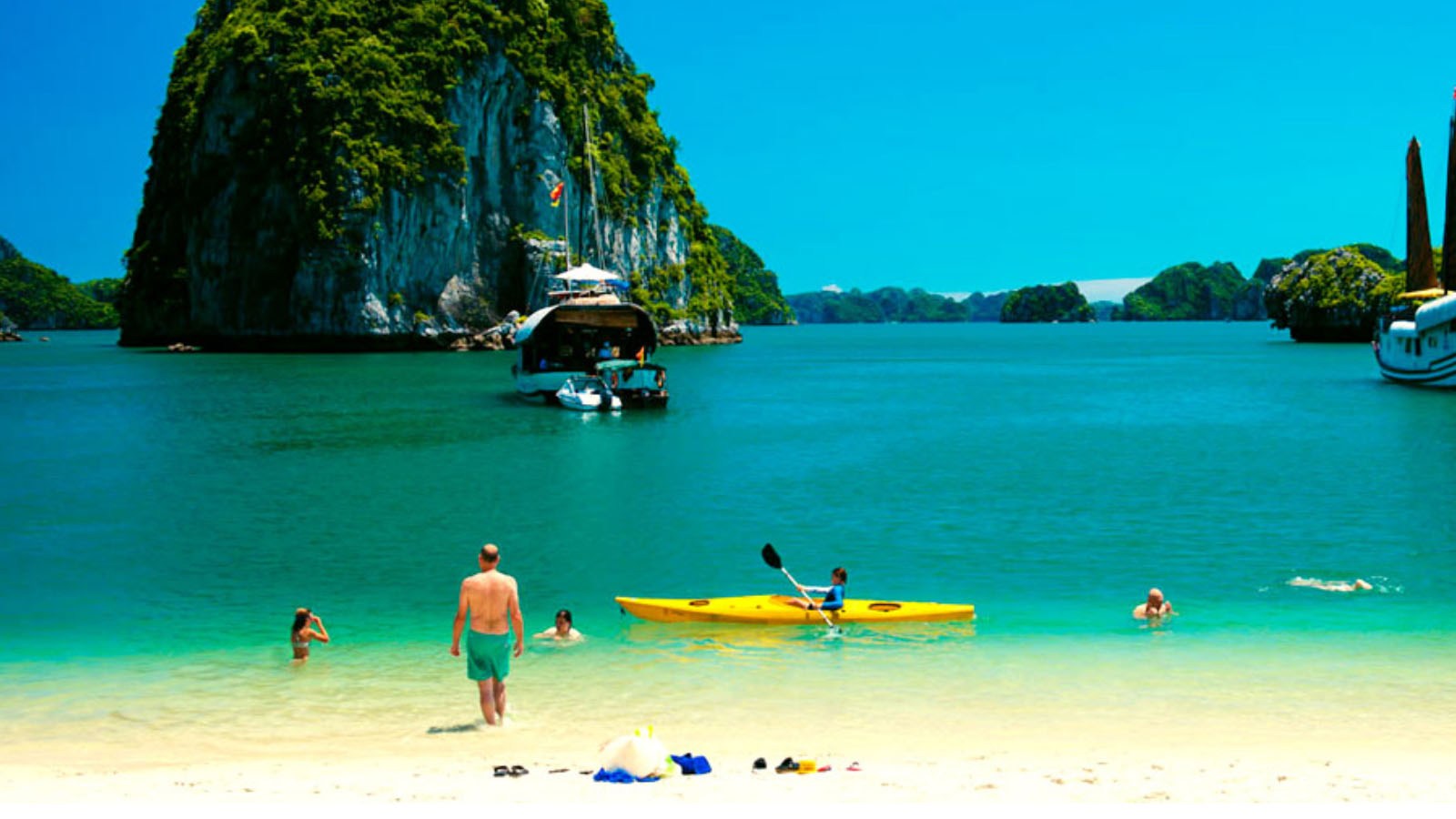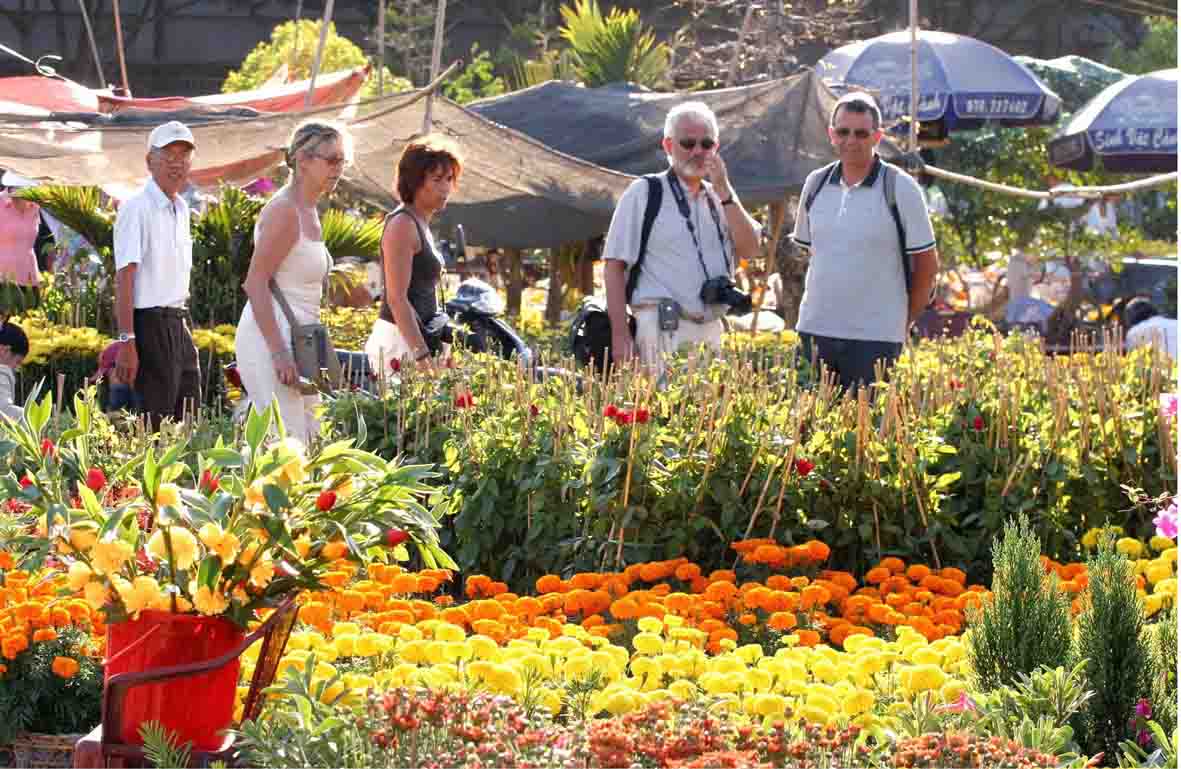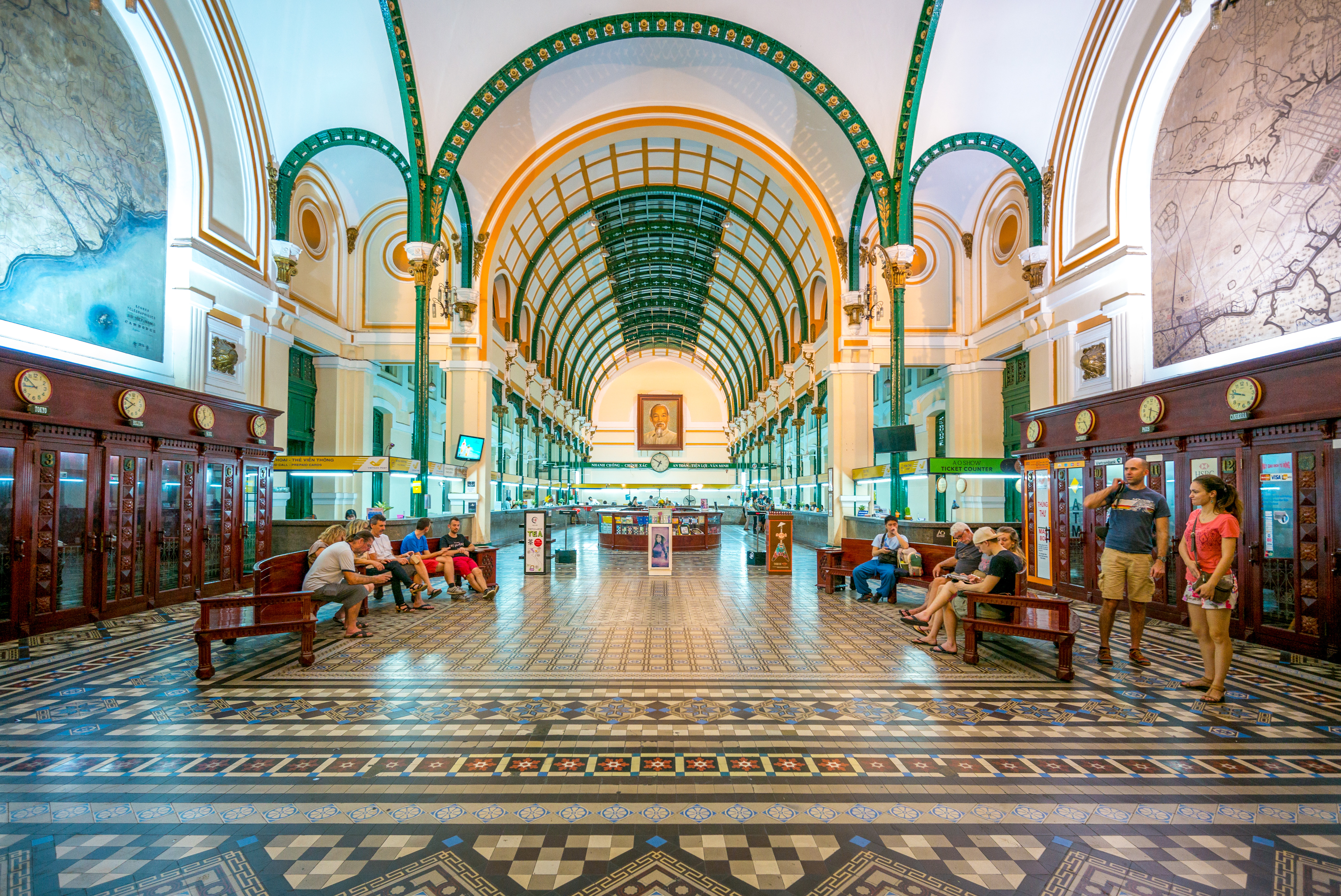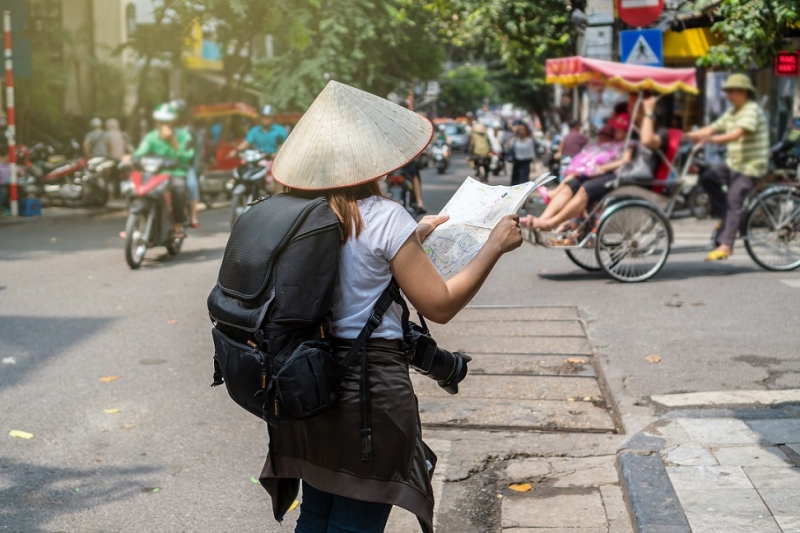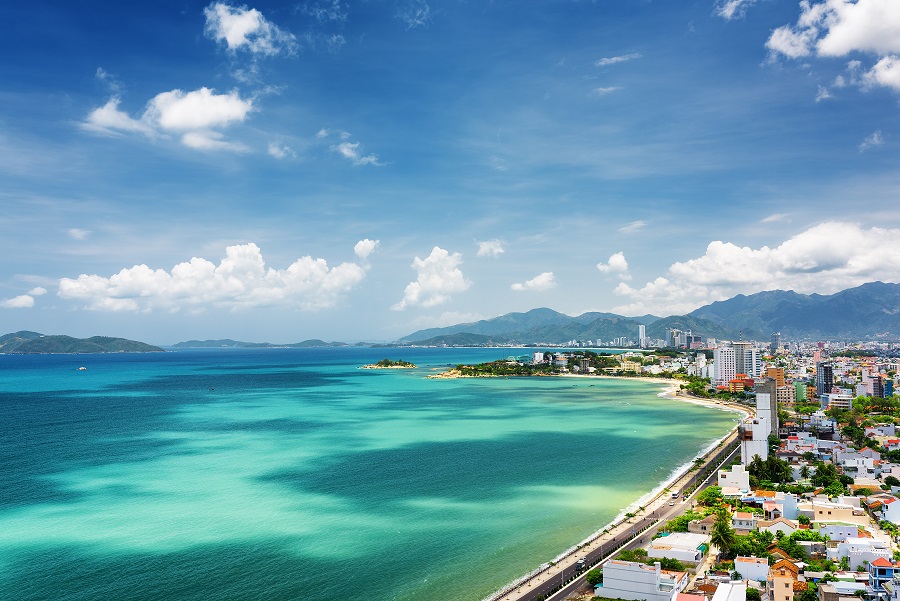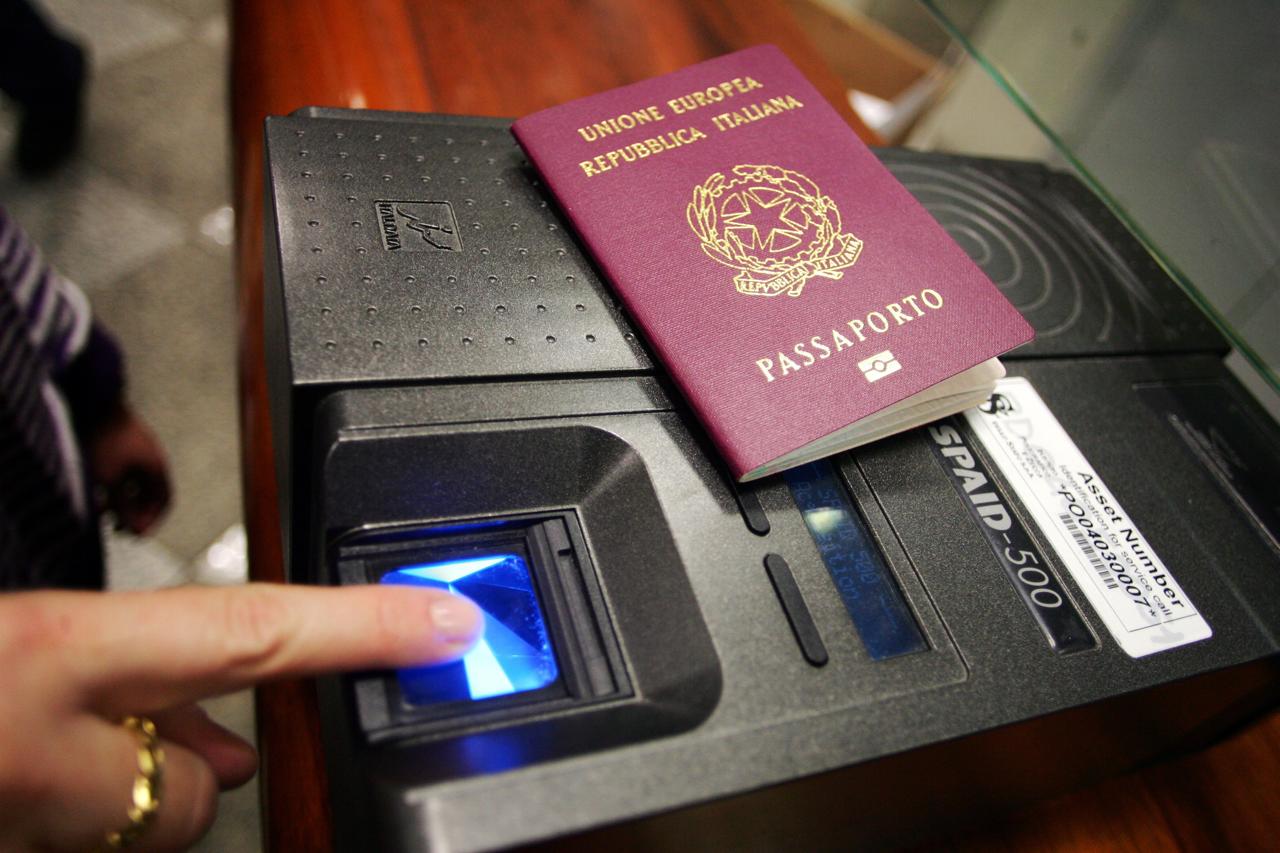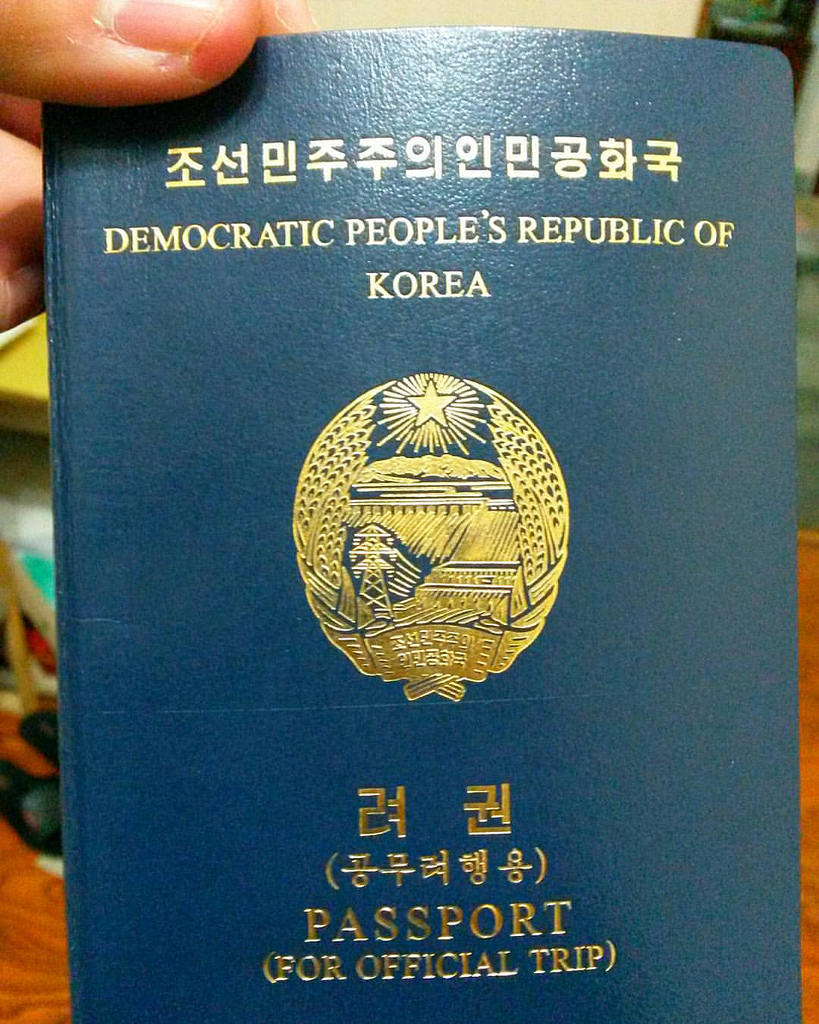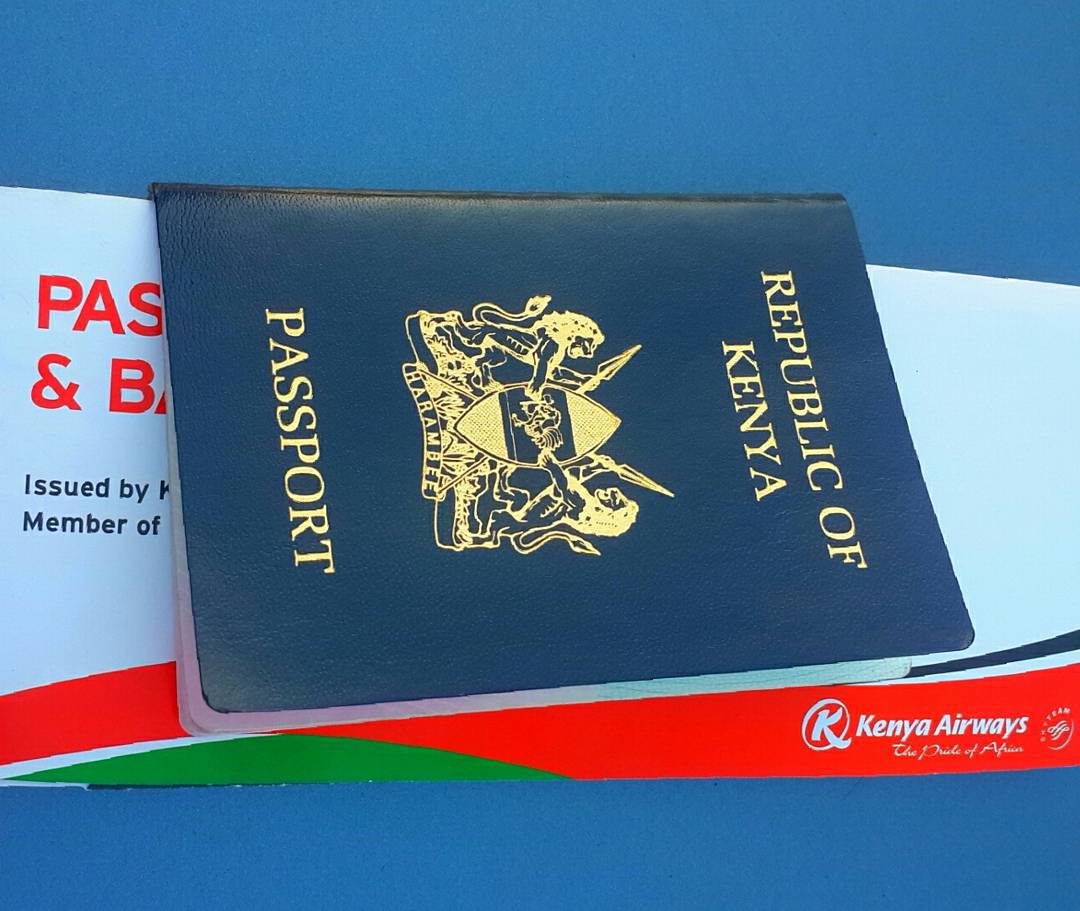Vietnam is home to hundreds of temples, pagodas, and places of worship. While the religious majority is Buddhism, there are also Christians, Taoists, Hindus, and small sects of Vietnamese folk religions throughout the country. The coexistence of all these religions yields ancient temples, marvelous pagodas, and more historic places of worship than are possible to see even in multiple visits to Vietnam. Also remember that all temples are not necessarily focused on a particular religion – sometimes they honor great people in Vietnamese history like war heroes or even special animals.
While it’s tempting to try to hit as many as possible, narrow your list to the top 4 temples in the country to get a taste of the temple culture of Vietnam:
1. Cao Dai Temple, Long Hoa Village
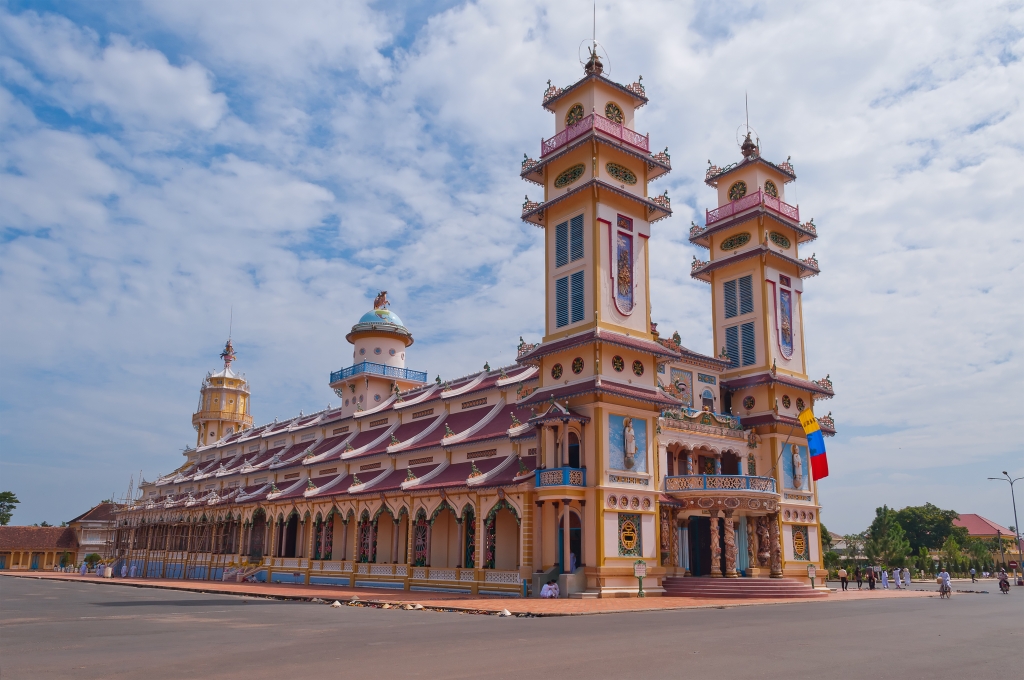
Cao Dai Temple in Tay Ninh Province
Roughly 100 kilometers outside Ho Chi Minh is the Cao Dai Temple. This multi-faceted, 1930s temple reflects the unique blend of Buddhism, Taoism, Hinduism, Confucianism, Islam, and Catholicism. Together they create Caodaism, a fascinating sect of Vietnamese religion created in 1926. Caodaism followers believe that all religions are equal; Buddha, Jesus Christ, Muhammed, Confucius – even Joan of Arc and Julius Caesar – are honored at the Cao Dai Temple. The temple closely resembles a Christian Cathedral with an altar, side aisles, and a high dome. However, the décor has a distinct Oriental feel with dragon-wrapped pillars and multiheaded snake depictions.
This unusual combination of beliefs that has been molded into a monotheistic religion creates both an interesting temple and fascinating ceremonies. This temple is open to the public, so visitors can watch the daily worshipping of Caodaism believers dressed in beautiful flowing robes of white, blue, yellow, or red. Visitors are invited to watch and even take pictures during the prayer ceremonies.
2. Ngoc Son Temple, Hanoi
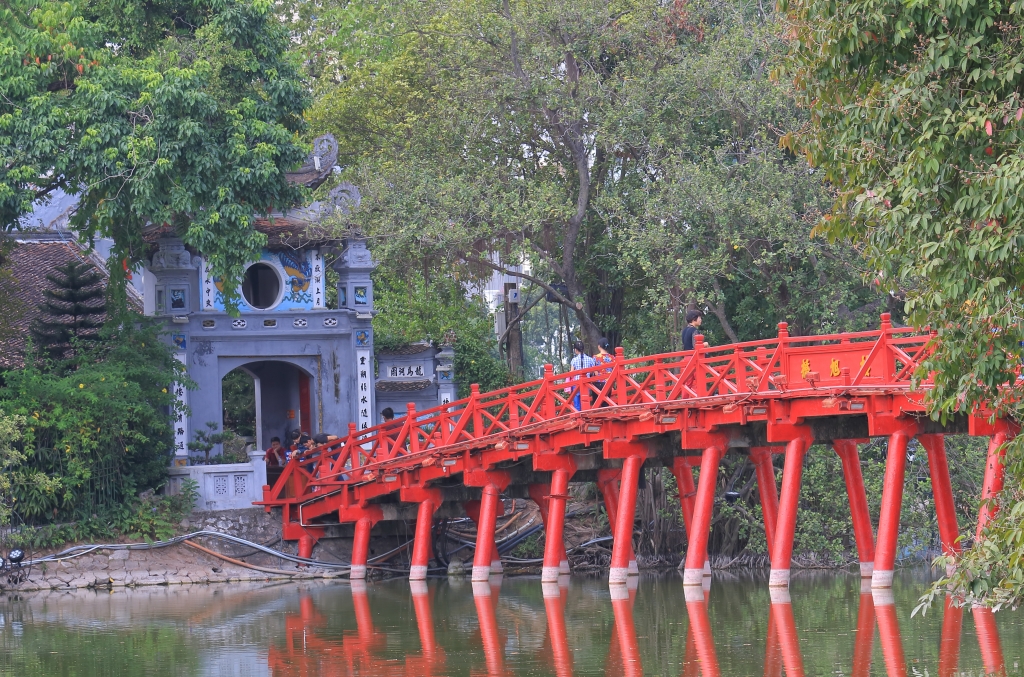
The wooden red “Rising Sun Bridge” leading to Ngoc Son Temple in Hanoi city
Situated in the center of one of Hanoi’s main tourist attractions, Hoan Kiem Lake, this temple’s serene surroundings make it worth the visit. The Ngoc Son Temple sits on Jade Island and is connected to the land by a bright-red bridge of classic Vietnamese design. Built in the late 18th-century, this temple’s purpose was to honor Tran Hung Dao, the military leader praised for his bravery during a battle with the Yuan Dynasty in the 13th century.
The temple’s environment is just as important as the structure itself. The peaceful vibes emitted from Hoan Kiem Lake make it a true oasis in the midst of Hanoi’s chaos. Even the lake waters are special. They are home to several endangered soft-shell turtles. Spotting one of these on a visit to Ngoc Son is considered to bring good luck.
3. Thien Mu Pagoda, Hue
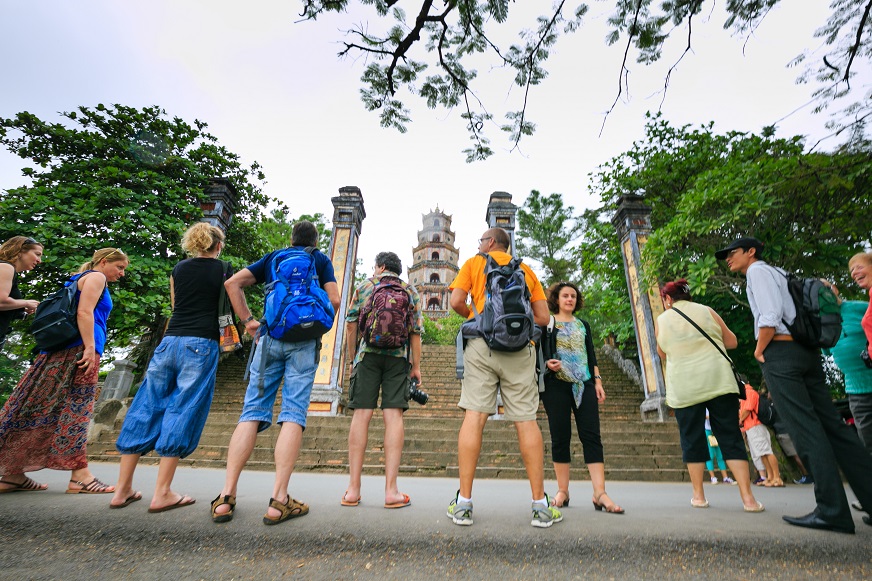
Thien Mu Pagoda in Hue
In addition to being one of the most attractive in Vietnam, the Thien Mu Pagoda also lays claim to one of the most scenic spots in the city of Hue. Perched atop a hill overlooking the ancient city and the Perfume River, this pagoda is an iconic site in Vietnam and regarded by many as the unofficial symbol of the city. The highlight is Thap Phuoc Duyen, the 21-meter octagonal tower which was built in 1844 by Emperor Thieu Tri. Each of the seven stories embodies one of the human Buddhas known as a manushi-buddha. The rest of the wooden sanctuary houses gold-played Buddhist statues, temple guardians, and several ancient artifacts. Interestingly, this pagoda also served as a Monastery to Thich Quang Duc, a famous Buddhist monk who sacrificed his life in protest of the unjust persecution of Buddhists in the early 1960s in southern Vietnam.
4. Van Thuy Tu Temple, Mui Ne
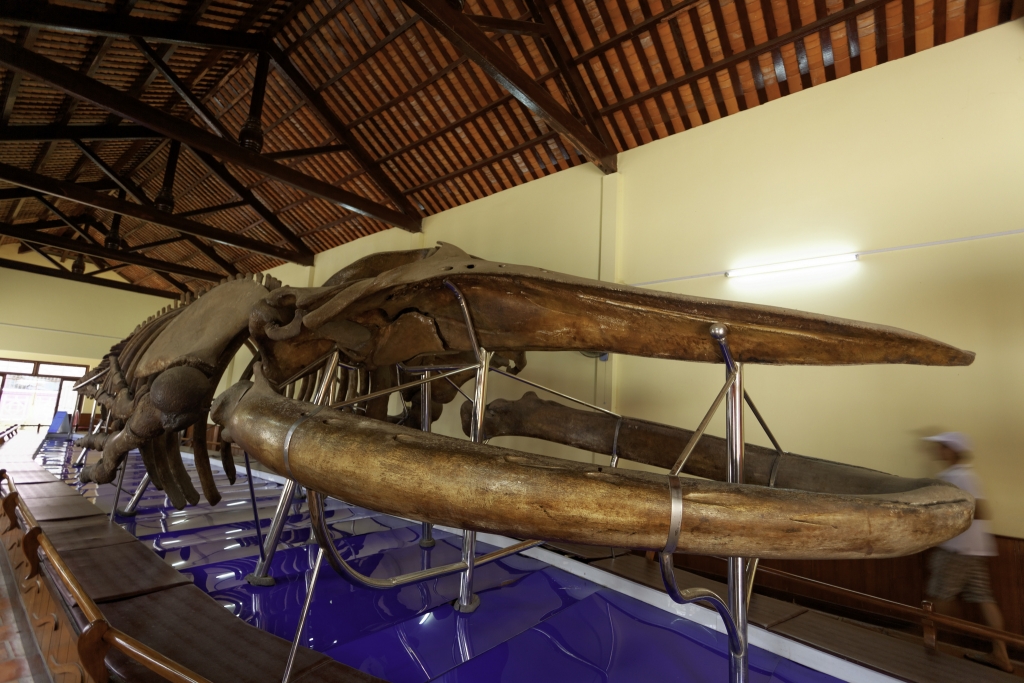
22-meter long whale skeleton in Van Thuy Tu Temple
This is the oldest and largest whale temple in Phan Thiet, an ancient coastal city with a bustling fishing port. In Vietnam, whales are considered very honorable creatures and are believed to protect fisherman from bad weather and dangers at sea. The Van Thuy Tu Temple is a perfect example of just how revered these ocean mammals are in Vietnam. It’s a small temple, but it holds the remains of over 500 whales – some of which are over 100 years old. It even displays a 22-meter long whale skeleton thought to have belonged to the largest whale in the entire Southeast Asian region! Built in 1762 during the Nguyen Dynasty, the temple also houses other ancient artifacts from this time period including statues, an incense table, and bronze antiques. This temple is just one shrine that pays homage to whales and is a very unique part of Vietnamese history.
*****
These are four of Vietnam’s most fascinating temples and they all vary in their purpose. Vietnam does not discriminate when it comes to their holy sanctuaries and their objectives. Some honor religion, some glorify famous people, and others even pay tribute to the country’s most respected mammals. The history, the stories of sacrifice, and the peaceful resolve is what makes visiting temples in Vietnam so deeply captivating.

Family with luggage at the airport for trip to Vietnam

